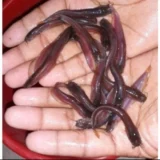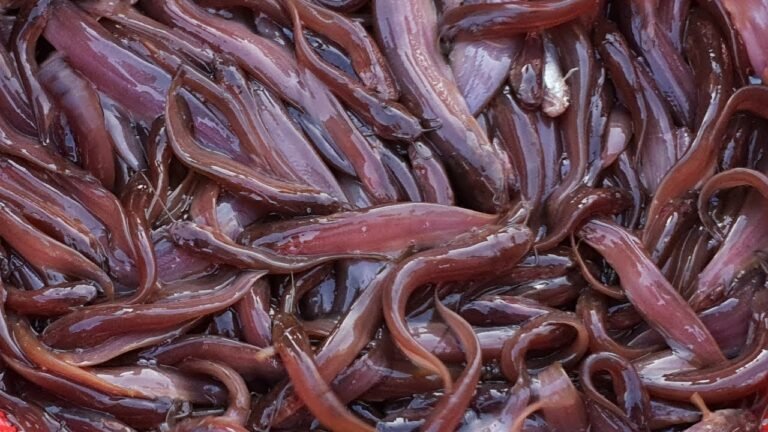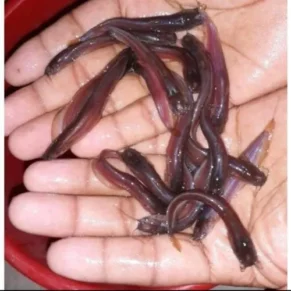- Your cart is empty
- Continue shopping
Shop
Singhi Fish Seeds
₹5,800.00 – ₹179,800.00
- * Please Note All 3 Charges Transportation, Railway Charges, Oxigen Packaging Are Included In This Rate.
- * For Any Rate Or Discount Plz Fill Free To Call Us At 8617386029 / 8373892551 .
- * Rate May Increase If We Shipped From Air As Per The Flight Charges.
- * Dispatched Only On Full Payment.
- * Partial Payment Only Accepted For Fish Booking.
- * Country of origin: India
Singhi Fish Seeds Farming: Culture, Importance, Growth Ratio, and Water Treatment
Singhi fish, also known as Asian Stinging Catfish or Heteropneustes fossilis, is a popular species in aquaculture due to its fast growth, high market demand, and unique flavor. This species is indigenous to South and Southeast Asia and has been widely farmed for both commercial consumption and as a source of income for rural farmers. Let’s explore the key aspects of Singhi fish farming, including its culture, importance, growth ratio, and water treatment.
1. Culture of Singhi Fish Farming
Singhi fish farming involves several stages, starting from seed production (fry and fingerlings) to grow-out in ponds or tanks. The culture method and management practices vary depending on the type of farm and the goals of the farmer (commercial farming or local consumption).
Production Process:
-
Spawning and Hatchery Management:
-
Singhi fish spawn naturally in monsoon-fed rivers and wetlands, but in aquaculture, spawning is often controlled to ensure the production of healthy seeds.
-
Artificial breeding methods are commonly used in hatcheries. Farmers use hormonal injections (such as human chorionic gonadotropin (hCG) or milt) to induce breeding in female Singhi fish. The eggs are fertilized, and once they hatch, the fry are raised in the hatchery or nursery tanks until they reach a larger size.
-
-
Nursing Stage:
-
Once the eggs hatch into fry, they are transferred to nursery ponds or tanks with high-density stocking. The fry are kept in well-maintained water, and care is taken to prevent disease outbreaks and ensure adequate nutrition.
-
The fingerlings (juvenile fish) grow for several weeks to months before being transferred to grow-out ponds.
-
-
Grow-out Stage:
-
Grow-out ponds or cages are used to raise the fish until they reach a marketable size. Singhi fish are carnivorous, feeding on smaller fish, worms, and natural food in the water, but they are also fed artificial pellets.
-
The fish are typically stocked at a density of 2-4 fish per square meter in ponds or tanks, and water quality is regularly monitored to avoid stress and disease.
-
-
Harvesting:
-
Singhi fish reach harvest size (about 0.5 to 1 kg) in 8-12 months under ideal conditions, depending on water quality and feeding management. The fish are harvested using netting or trap systems when they reach the desired size.
-
2. Importance of Singhi Fish Farming
Singhi fish farming has considerable economic and ecological importance, especially in regions where fish is a significant part of the diet.
Economic Importance:
-
High Market Demand: Singhi fish is popular for its firm, flavorful meat. It is commonly consumed in India, Bangladesh, Myanmar, and other South Asian countries. It has significant demand in local markets and is also sought after in urban areas.
-
Low Feed Conversion Ratio (FCR): Singhi fish is a carnivorous species but adapts well to farm feeding. It has a relatively low FCR, meaning it can convert feed to body weight efficiently. This reduces the cost of feeding and increases profitability for farmers.
-
Income for Rural Farmers: Singhi fish farming can be a source of income for rural communities, as it is suitable for small to medium-sized farms and can be integrated into existing farming systems. The fish can be raised in ponds, rice fields, or low-lying water bodies, which are often not suitable for other species like tilapia or catfish.
-
Cultural and Traditional Value: Singhi fish is not only valued for its taste but also has cultural significance in many parts of South Asia. It is used in traditional dishes, especially in local festivals and religious rituals.
Ecological Importance:
-
Water Ecosystem Balance: Singhi fish is well-suited to integrated farming systems, where it can help manage aquatic vegetation and provide benefits to rice cultivation, especially in regions with seasonal flooding.
-
Sustainability: Singhi fish are hardy and resistant to some of the common diseases that affect other farmed fish species, which makes them a low-maintenance and sustainable choice for aquaculture in areas with minimal access to veterinary care or sophisticated technology.
3. Growth Ratio of Singhi Fish
Singhi fish are known for their rapid growth in aquaculture systems, especially when the water quality is maintained properly and feeding is optimized.
Growth Rate:
-
Fry to Harvest: Singhi fish generally take 8-12 months to reach harvestable size, which is around 0.5-1 kg.
-
Growth per Month: In optimal conditions, Singhi fish can grow approximately 50-100 grams per month.
-
Market Size: The ideal market size is 0.5 to 1 kg, which is the most common size that consumers prefer. Larger sizes can be grown but require more time.
Feed Conversion Ratio (FCR):
-
Singhi fish are efficient feeders, converting feed into body mass with an FCR of around 1.5-2 (meaning for every 1.5-2 kg of feed, 1 kg of body weight is gained). This makes them a relatively cost-effective fish for farmers compared to other species like prawns or tilapia.
Potential for Larger Sizes:
-
With optimal care, Singhi fish can grow beyond 1 kg, but the rate of growth slows down as the fish approach larger sizes, especially after 1 year. However, they are most commonly harvested at 0.5-1 kg for best marketability.
4. Water Treatment and Management
Water quality is crucial for the success of Singhi fish farming. Singhi fish require clean, well-oxygenated water for optimal growth and to prevent disease.
Key Water Parameters:
-
Temperature:
-
Singhi fish thrive in warm water, with an optimal temperature range of 25°C to 30°C (77°F to 86°F). Water that is too cold can cause stress and slow down growth, while excessively hot water may lead to oxygen depletion.
-
-
Dissolved Oxygen (DO):
-
Singhi fish are oxygen-sensitive and require good dissolved oxygen levels. The minimum DO should be 5 mg/L to ensure healthy growth and activity. Aeration systems like paddlewheels or diffused air systems are essential for maintaining high oxygen levels, particularly in high-density ponds.
-
-
pH Levels:
-
The ideal pH range for Singhi fish is between 6.5 and 8.5. Water that is too acidic or alkaline can cause stress, reduced growth, and even death. Regular water testing is necessary to ensure that the pH is within the desired range.
-
-
Ammonia and Nitrite Levels:
-
Like most fish species, Singhi fish are sensitive to ammonia and nitrites. These toxic substances are produced from organic waste and uneaten feed. Ammonia levels should be kept below 0.5 mg/L, and nitrite levels should be kept below 0.1 mg/L.
-
Biofiltration systems are important in large-scale farming setups to convert harmful ammonia into less toxic nitrates.
-
-
Turbidity and Organic Load:
-
High turbidity (cloudy water) and organic load can reduce water quality, hinder oxygen absorption, and increase the likelihood of disease. Regular pond cleaning, removal of excess feed, and proper filtration are important practices.
-
Water Treatment Systems:
-
Aeration Systems: Proper aeration is essential for maintaining sufficient dissolved oxygen levels, especially in crowded or intensively stocked ponds. Paddlewheels, air pumps, and diffused oxygen systems are commonly used.
-
Filtration: Mechanical filtration is required to remove waste and debris, while biofilters help convert harmful nitrogen compounds into less toxic substances.
-
Water Exchange and Recirculation: In recirculating aquaculture systems (RAS), water is treated and reused, reducing water consumption. In traditional pond systems, regular water exchange (replacing 10-20% of water every week) helps to refresh the water, prevent nutrient buildup, and maintain water quality.
-
Monitoring: Regular water testing (for pH, oxygen levels, ammonia, nitrites, and temperature) is critical for preventing poor water quality, which can lead to disease outbreaks, reduced growth rates, or fish death.
Conclusion
Singhi fish farming offers significant economic and ecological benefits due to its high growth rates, efficient feed conversion, and market demand. With the proper management of water quality, including optimal temperature, oxygen levels, and regular monitoring of pollutants, Singhi fish farming can be highly successful.
The species is well-suited for rural and small-scale farms, as it can be farmed in traditional ponds or integrated systems. By managing breeding, feeding, and water quality, farmers can achieve fast growth and excellent profitability with Singhi fish.
| Quantity | 1000 Pcs, 2000 Pcs, 4000 Pcs, 5000 Pcs, 10000 Pcs, 20000 Pcs, 50000 Pcs, 100000 Pcs |
|---|








